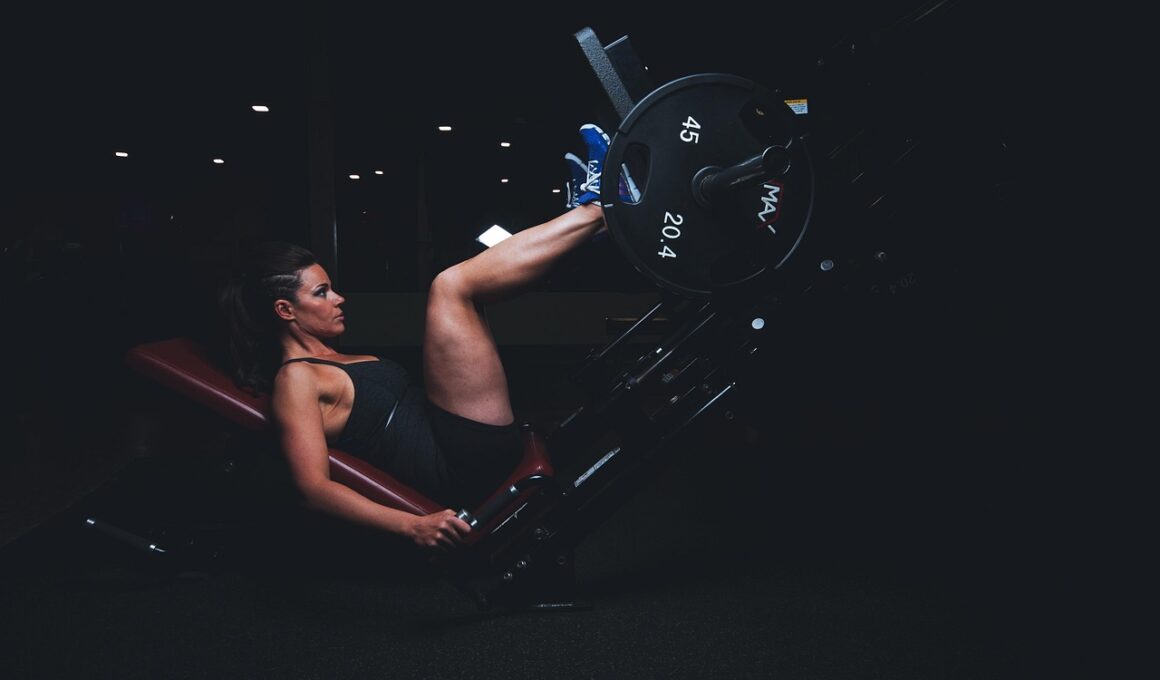How to Perfect Your Push-up Form for Maximum Effectiveness
Push-ups are a fundamental exercise for building upper body strength, providing numerous benefits. To gain the most from this classic movement, it’s crucial to ensure your form is as precise as possible. Incorrect technique can lead to injury and decreased effectiveness. In this article, we will explore the essential aspects of push-up form that maximizes your results. Firstly, positioning is key. Begin with your hands placed slightly wider than shoulder-width apart. This stance allows for greater stability and engages your chest muscles more effectively. Furthermore, you should engage your core and keep your body in a straight line from head to heels throughout the movement. This helps avoid sagging or arching of the back, which can introduce strain. Also, as you lower yourself down, ensure your elbows form a 45-degree angle relative to your torso. This positioning helps protect your shoulder joints during the push-up. Practicing these techniques can greatly enhance your overall push-up performance and contribute to a more robust fitness routine over time.
Variations to Challenge Your Push-up Skills
Once you feel confident executing standard push-ups, consider incorporating various push-up types to keep your routine fresh and target different muscle groups. Some key variations include wide grip, close grip, diamond, and incline push-ups. Wide grip push-ups engage more of your chest muscles, providing an alternative way to develop strength. In contrast, close grip or diamond push-ups focus on the triceps, making them an excellent choice for building upper arm strength. Another variation is the incline push-up, which is easier on the arms and shoulders, particularly for beginners or those with injury concerns. To perform an incline push-up, elevate your hands on a bench or platform, allowing for a more gradual angle. Conversely, decline push-ups require your feet to be elevated. This increases the intensity and activates your upper chest and shoulders. Whichever variation you choose, maintaining proper form is critical to prevent injury. Embrace the challenge, and continue to evolve your push-up methodology to maximize muscle development efficiently.
Understanding muscle engagement during push-ups is essential for proficient technique. Primarily, the pectoralis major plays a significant role, acting as a primary mover muscles while lowering and raising the body. Additionally, the deltoids and triceps work in conjunction to stabilize and support the push-up movement. By actively engaging these muscle groups, you increase the impact of each repetition. An excellent practice is to perform push-ups with a mind-muscle connection, focusing on activating these areas throughout the exercise. Furthermore, keeping your core tight throughout the movement will help maintain stability and protect your spine. You may also want to explore additional techniques, such as pausing at the bottom of the push-up, to build explosive strength for improved repetitions. Building strength through various muscle fibers will enable you to perform more challenging exercises over time. Endurance activities or setting specific rep goals can augment this process effectively. A well-structured fitness program that integrates push-ups will undoubtedly ensure substantial benefits in strength, endurance, and overall fitness.
Breathing Techniques for Better Performance
Effective breathing during push-ups is often overlooked but can significantly enhance performance. Correct breathing patterns help deliver oxygen to the muscles, aiding in endurance and strength during your workout. Exhale as you push your body upward, and inhale as you lower yourself towards the ground. This cyclical pattern promotes stability and strength during the movement. Inhale deeply before beginning your repetitions to ensure you’re adequately oxygenated and can push through each phase. Moreover, maintain a steady rhythm to promote consistent performance, enabling better mental focus and timing. Some individuals also find it helpful to count their breathing along with their reps, ensuring a balanced approach. Always remind yourself that form comes first, and proper breathing can assist you in achieving this. Failing to breathe properly may lead to fatigue or decreased engagement, undermining the benefits of your workout. Ultimately, integrating thoughtful breathing strategies into your routine bolsters both body awareness and performance during physical activity, helping you to achieve your fitness goals more effectively.
Recovery is just as crucial as the workouts themselves. Adequate recovery enables your muscles to heal and repair, ultimately leading to better strength and performance during future push-ups. It’s advisable to allow a 48-hour recovery window for muscle groups engaged during push-ups, which commonly includes the chest, triceps, and shoulders. Incorporating dynamic stretching and mobility exercises post-workout can also aid recovery and help maintain flexibility in supporting muscles. Additionally, consider developing a balanced nutrition plan geared towards recovery, such as incorporating protein-rich foods for muscle repair. Staying hydrated during and after workouts can promote overall performance as well. Engaging in active recovery days, such as light cardio and yoga, can prevent stiffness while enhancing circulation and overall recovery processes. Don’t forget the importance of sleep; quality rest is crucial for muscle restoration and performance enhancement. A well-rounded recovery approach ensures you remain strong and ready for your next workout session. Taking care of your body is essential for longevity in any fitness routine, particularly one centered around challenging exercises like push-ups.
Common Mistakes to Avoid
Many individuals fall into common pitfalls while performing push-ups, which can diminish effectiveness and lead to injury. One of the most prevalent mistakes is improper hand placement, where hands are either too close or too far apart. Having hands positioned incorrectly can reduce the engagement of target muscles and influence overall strength. Furthermore, sagging hips or a protruding lower back during the movement can compromise your form. Always maintain a straight line from your shoulders to your heels to enhance effectiveness and safety. Another mistake includes rushing through repetitions without controlled movements. Performing push-ups too quickly often results in poor form and minimizes the benefits gained. Instead, aim for a pace that emphasizes the full range of motion while ensuring proper technique. Additionally, neglecting to engage the core can destabilize the body and lead to misalignment. Practicing slow, deliberate movements can help reinforce proper form and prevent injuries, ultimately leading to more profound strength gains. Taking the time to master each facet of your push-up technique will greatly enhance your fitness progress.
Tracking your progress is essential for ensuring continuous improvement in your push-up technique. Utilizing a fitness tracker or a simple notebook to log your workouts can help monitor changes in strength and endurance over time. By setting specific goals for the number of repetitions, variations, and time intervals, you can gauge your progress accurately. Experimenting with different push-up variations will also highlight strengths and weaknesses, allowing you to focus your training effectively. Remember to record achievements such as completing a certain number of push-ups or extending the duration of your workouts. Regularly assessing your form through video recordings can also enhance your self-awareness regarding technique. Invite a workout partner to provide valuable feedback on your form or suggest helpful adjustments. Additionally, as you discover areas for improvement, don’t hesitate to reach out to personal trainers or online communities for support. Embrace the journey of mastering push-ups, and celebrate milestones both big and small. Engaging in a supportive community can boost motivation while solidifying your dedication to achieving excellence in this fundamental exercise.
In conclusion, mastering push-up form is crucial for maximizing the effectiveness of this power-packed exercise. By focusing on proper body positioning, muscle engagement, and breathing techniques, you’ll elevate your push-up practice. Incorporating a variety of push-up styles keeps workouts engaging while targeting different muscle groups. Emphasizing recovery ensures sustainable strength gains and reduces the risk of injuries. Equally important is avoiding common mistakes that can hinder progress and potentially lead to injury. Keeping yourself accountable through tracking progress ensures continuous improvement, motivating you to achieve your fitness goals. Embrace the process of perfecting your push-up form and celebrate the accompanying benefits for overall strength and endurance. Remember, consistency is key. A well-rounded fitness program that integrates structured push-ups will yield the best performance in the long run, creating a solid foundation for other exercises and activities. As you advance through your push-up journey, consider sharing your experience with fellow fitness enthusiasts. They may gain valuable insights from your successes and challenges. Enjoy the journey to strength and fitness while forging a commitment to your health and well-being.


